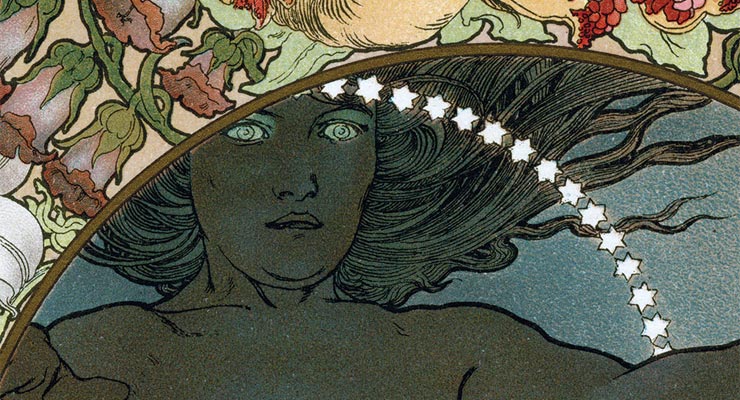
Art Nouveau illustrator Alphonse Mucha’s beautiful occult-inspired art from the turn of the century
Ultraculture friends Century Guild are releasing a coffee table book of the occult Art Nouveau illustration of Alphonse Mucha. It looks like an absolutely incredible project—and one that will definitely appeal to occult art collectors! Mucha drew on motifs from Kabbalah and turn-of-the-century occulture for his works—several of which are featured below!
Here’s what Century Guild has to say about Mucha:
By December 20, 1899, Alphonse Mucha had experienced four years as the most recognizable proponent of Art Nouveau graphics and the most celebrated illustrator in Paris. The massive output of the artist in his first four years in the advertising and decorative world earned much for Mucha’s publisher but very little for the artist himself.
As the end of the century grew near, Alphonse Mucha insisted upon the release of a deeply personal work, and printed 510 copies of what he for the remainder of his life considered his works-on-paper masterpiece, Le Pater.
Decidedly non-denominational, Mucha’s exploration features a female deity protecting humankind and a number of sophisticated occult themes across a series of images of mystical illustrations.
Unlike the advertising art that had dominated Mucha’s output since his “discovery” by Sarah Bernhardt in late 1894, Mucha described this series of images to a New York reporter as “the thing I have put my soul into.” (The Sun newspaper, 5 January, 1900)
Mucha’s previous artworks were lithographed on numerous mediums ranging from paper to silk, in multiple formats; Mucha’s publisher Champenois saw that Mucha was the most printed artist in Paris in the late 1890s. Mucha’s concern, understandably, was likely that the imagery of his spiritual work would be capitalized upon. By 1899, he had earned the right to demand that the Le Pater images would be produced in an edition of only 510 copies, and subsequently saw the plates destroyed- ensuring the work would never be reprinted for mass-market purposes.
The images from Le Pater are mentioned in numerous Mucha books as his masterpieces and are universally acknowledged alongside his massive Slav Epic paintings as his finest work. However, as a result of Mucha’s forced limitation of the publication of this masterwork, the rarity of the lithographs means that most books are limited to mentioning the images in the text and leaving the reader to wonder what these “lost masterpieces” might look like.
The original promotional materials for the Le Pater series name these artworks as of “rare interest and considerable importance”. Over 115 years later, the description continues to ring true.
If you’d like to see all these artworks in one book, captured in high resolution from the originals, please support our project and pre-order the book!
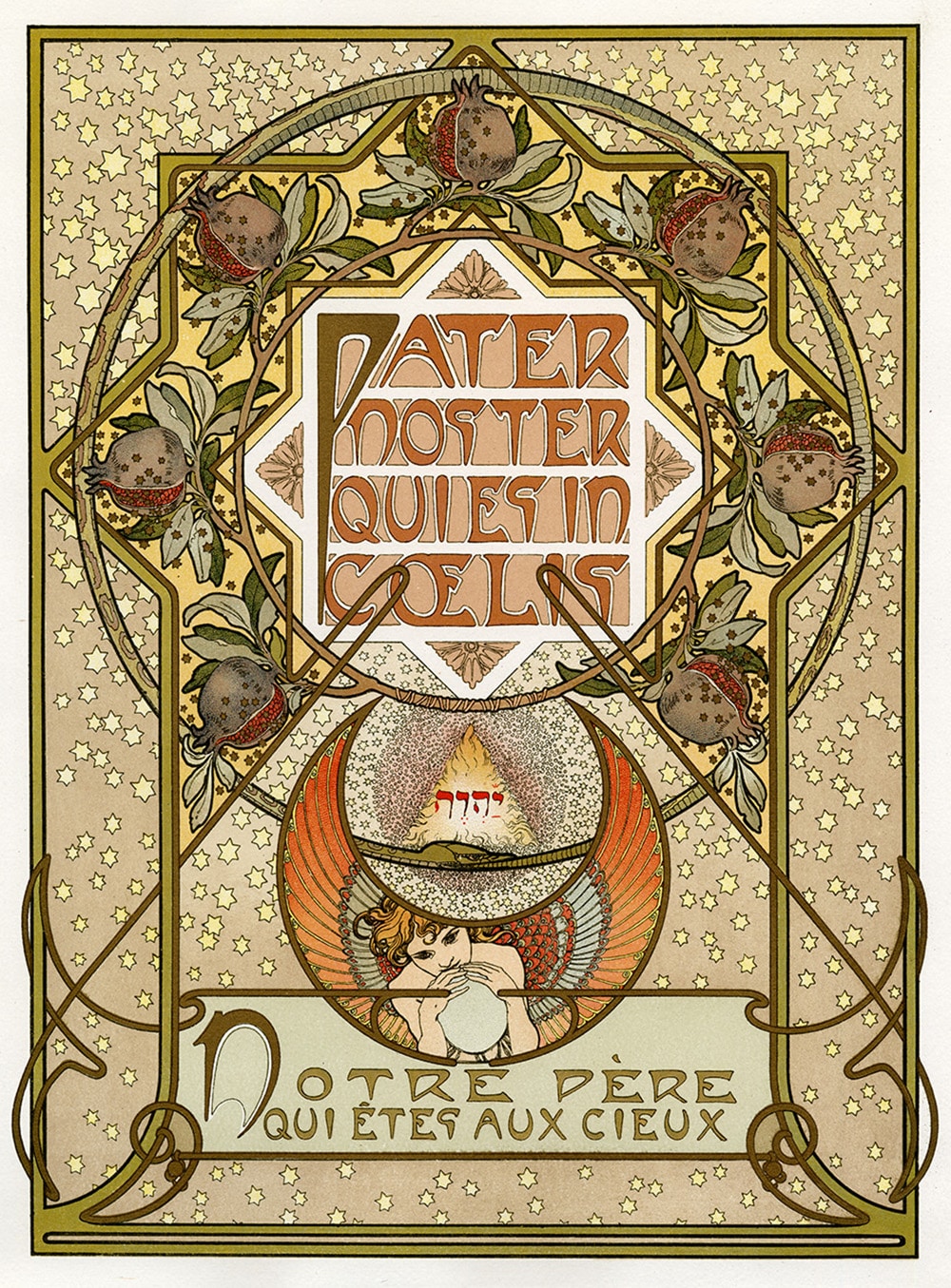
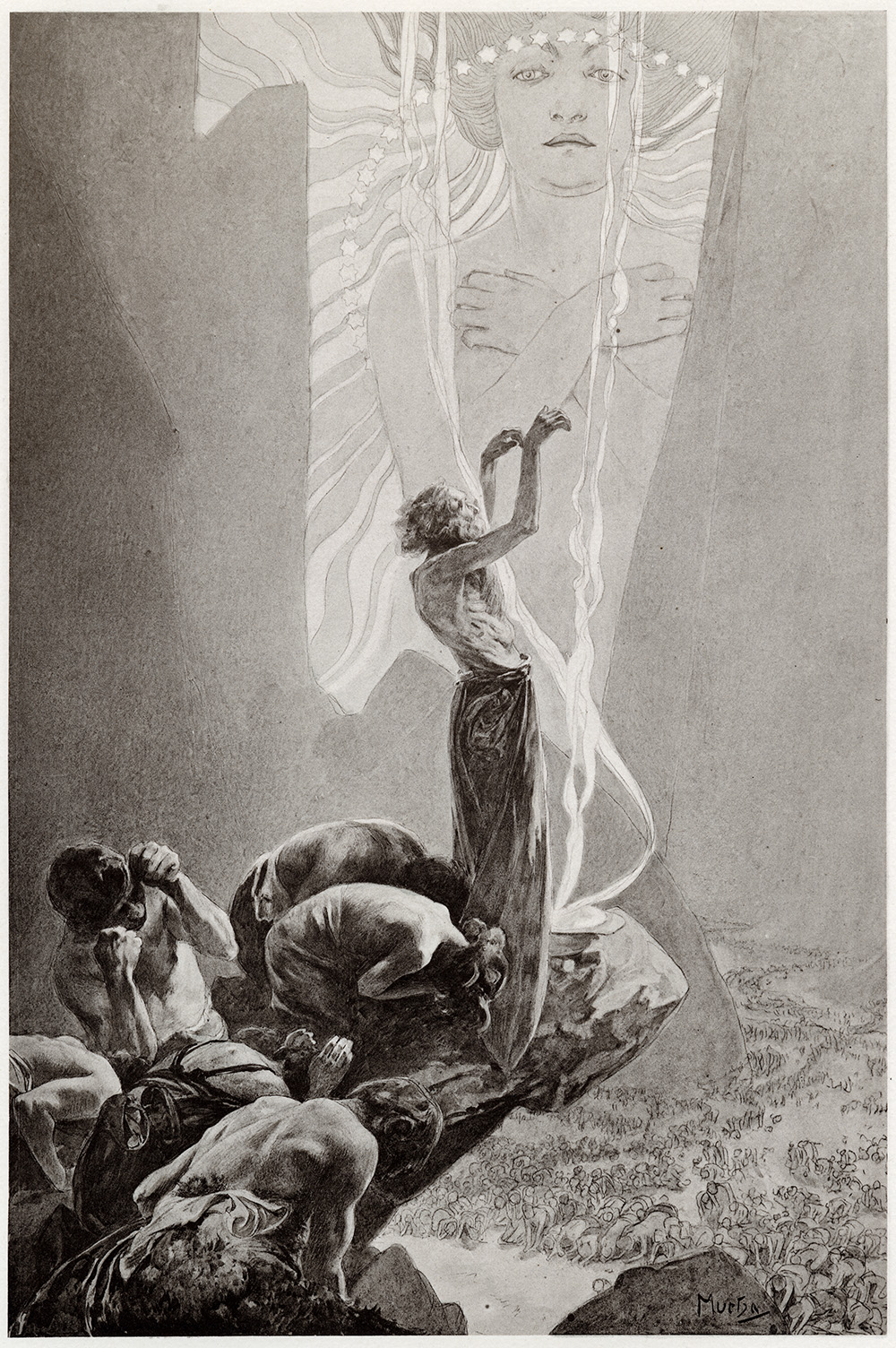
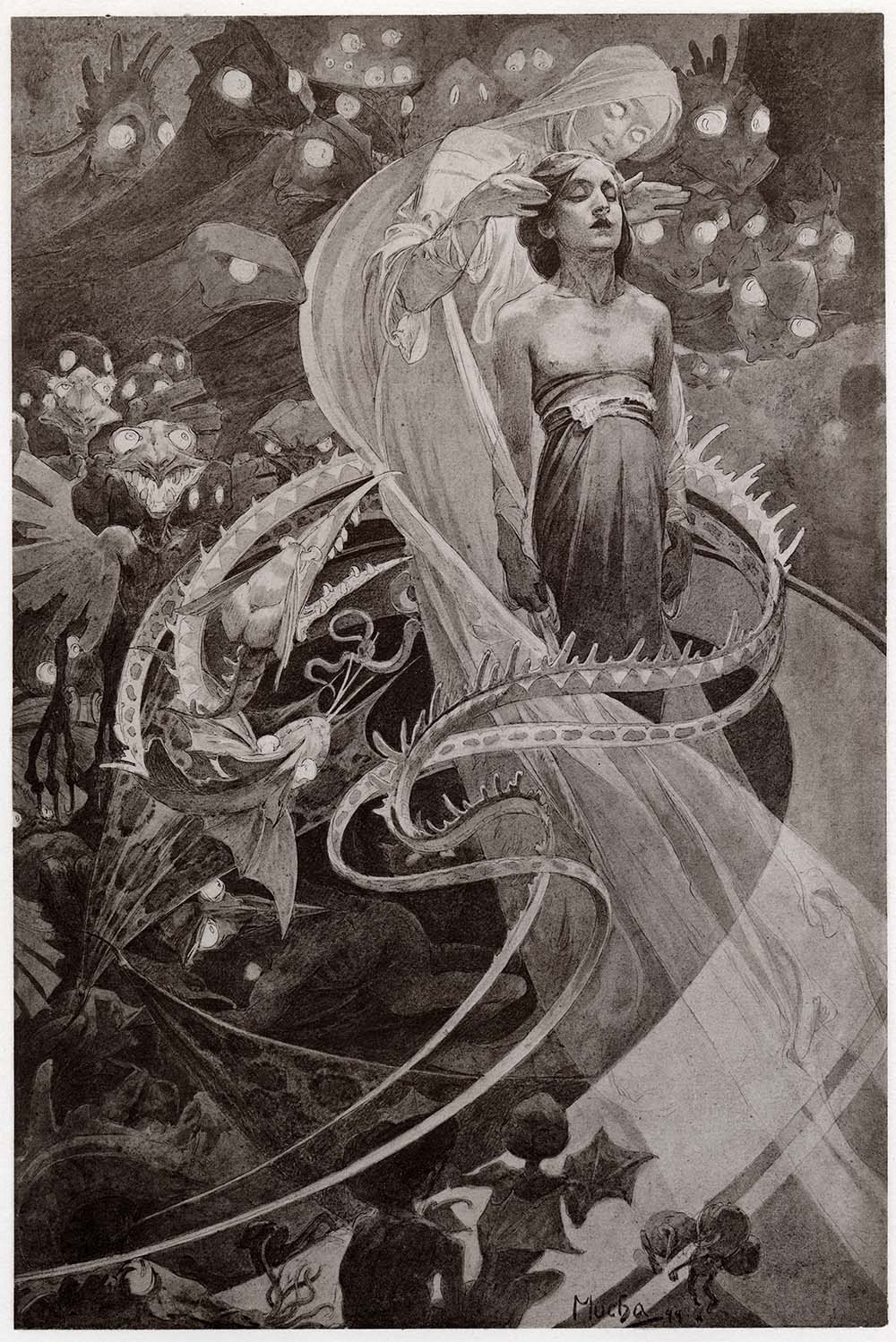
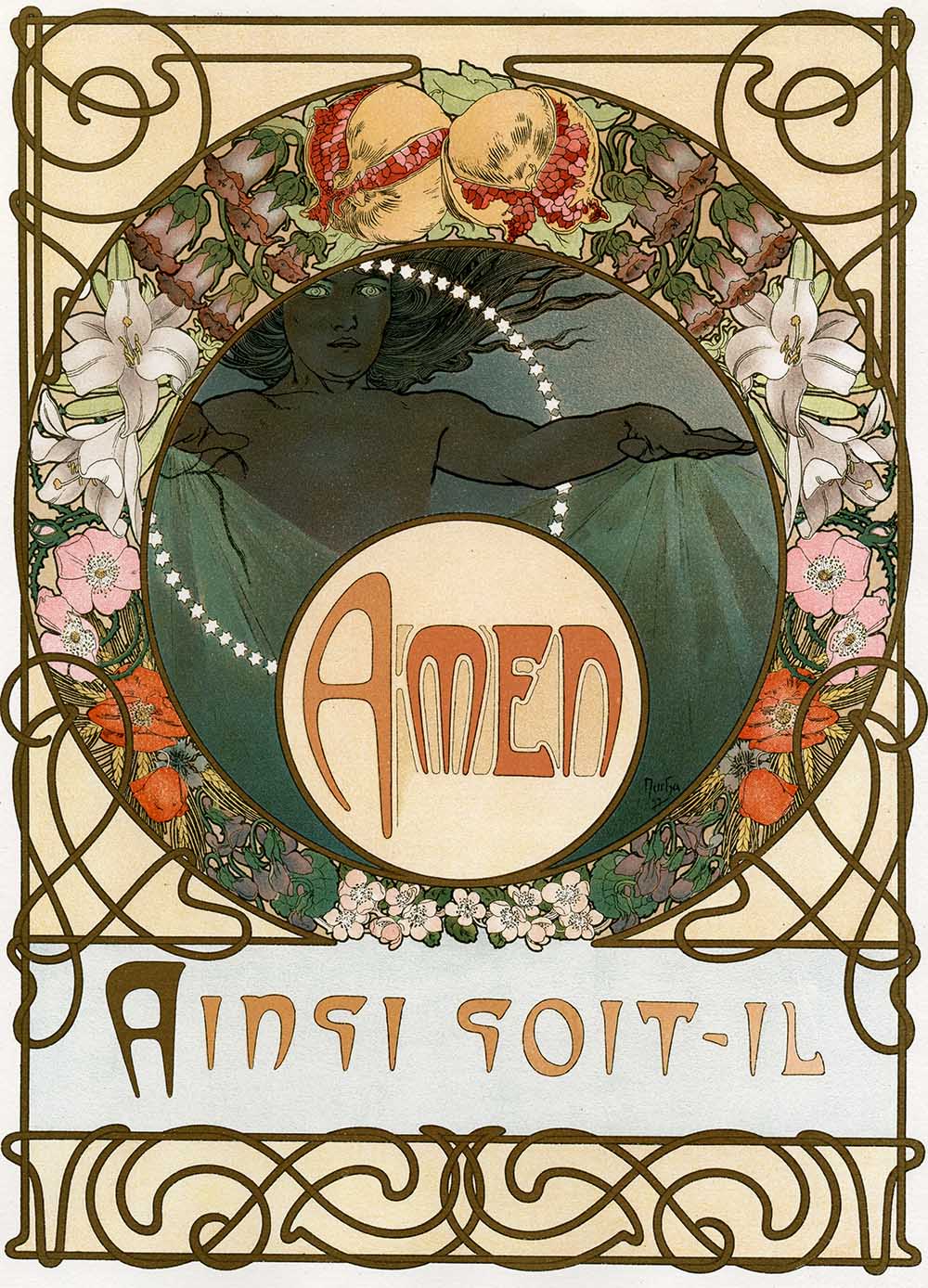
Leave a Reply